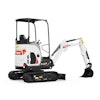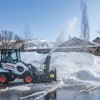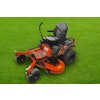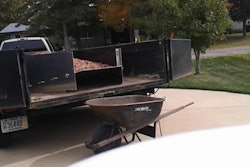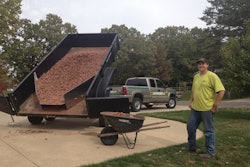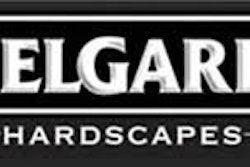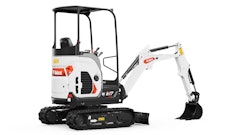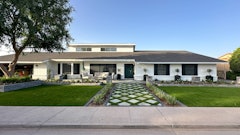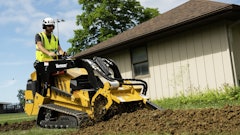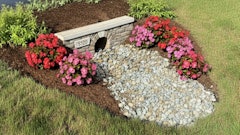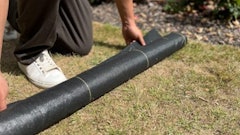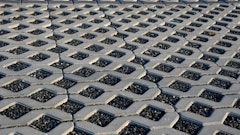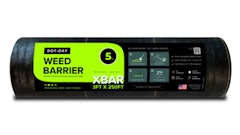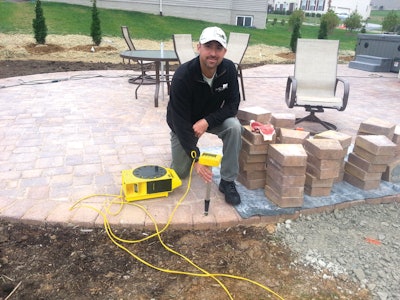
Chad Beidel of Outside Solutions in Sykesville, MD, says that when it comes to grading or installing hardscapes, a zip level is something he could no longer do without. “It’s quicker, faster and more accurate than the conventional laser level or transit level,” Beidel says.
Beidel switched to using a zip level in 2010. Before that he’d spent 20 years using transit levels, laser levels, and even string line. “A landscape architect I do work for showed me how easy it is to set up and store in my truck, and how easy it is for one person to operate,” Beidel relates. “I purchased one from the manufacturer, Technidea. There are different accessories you can buy which will affect the cost. I paid around $900 for the zip level, unipod, protective boot and 75-foot cord.”
How it pays for itself
Client is super impressed. “When I’m estimating a project, the homeowner is always impressed when I pull out the zip level and shoot grades on the site,” Beidel says. “I ask if they’ve ever seen anything like this before and most say they haven’t. I explain that this device allows me to get the exact measurements so I can give an exact price for what it’s going to take to do their project.”
Avoid underestimating. Many times, Beidel explains, an area can look relatively flat—but turns out to have 6 inches of fall on it. “That’s a lot when building a patio or wall,” he says. That can easily result in a job that produces no profit. “A zip level takes the guess work out of it,” according to Beidel.
Less manpower. Beidel uses his zip level for excavation, base work, and to double check all measurements on a job. String lines, he says, can get in the way and get bumped, and take far too long to set up. Transit levels take a while to set up. You also have to be careful not to bump them or move them. Plus, they require two-person operation in order to check the measurements. “You can end up with three different measurements each time you measure something,” Beidel says. “On the other hand, a zip level is fast, accurate and easy to use.”
Versatile. Beidel also uses his zip level around buildings, down a hole and up a hill. Since there’s no stick to hold, it is very versatile.
